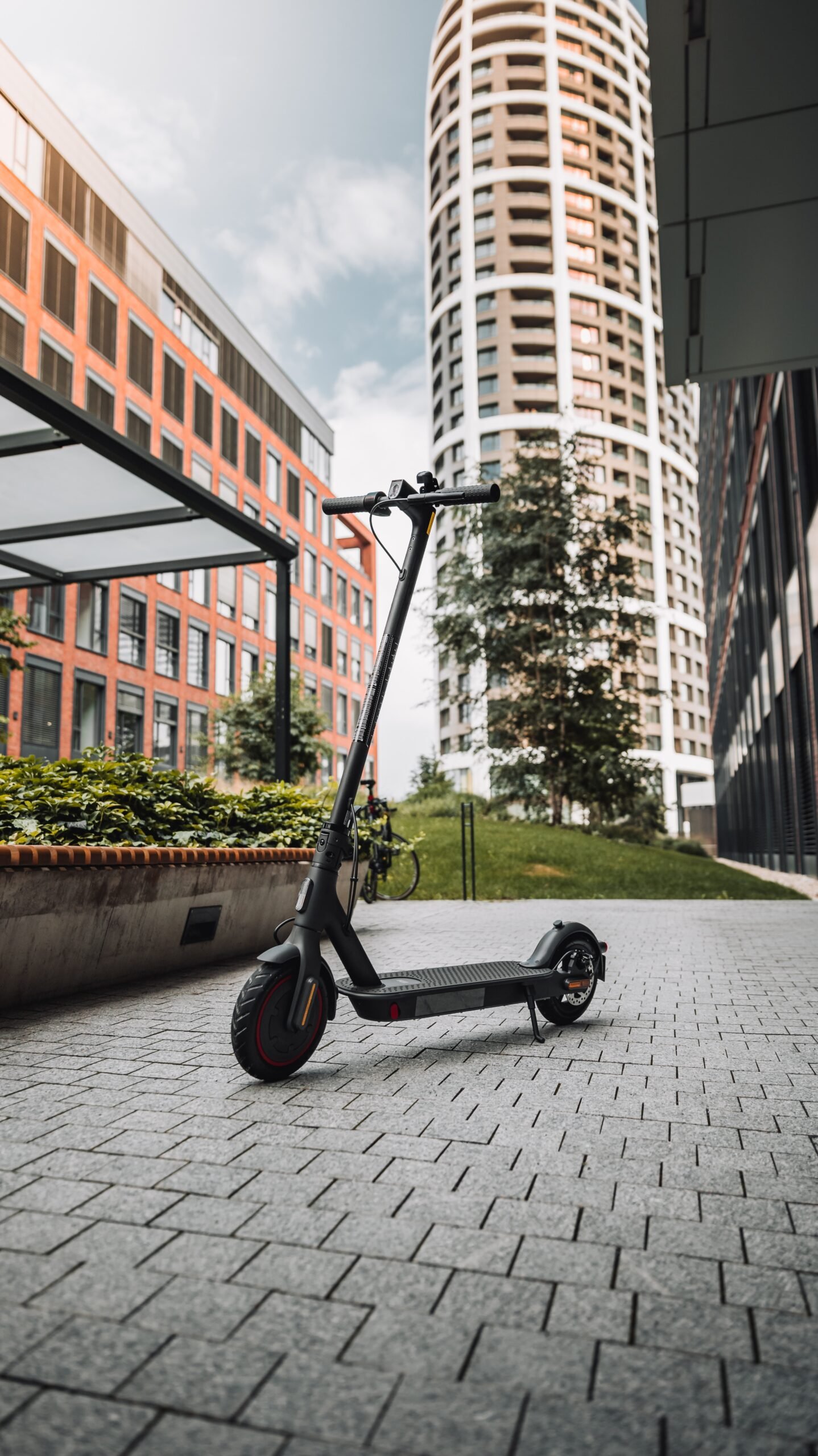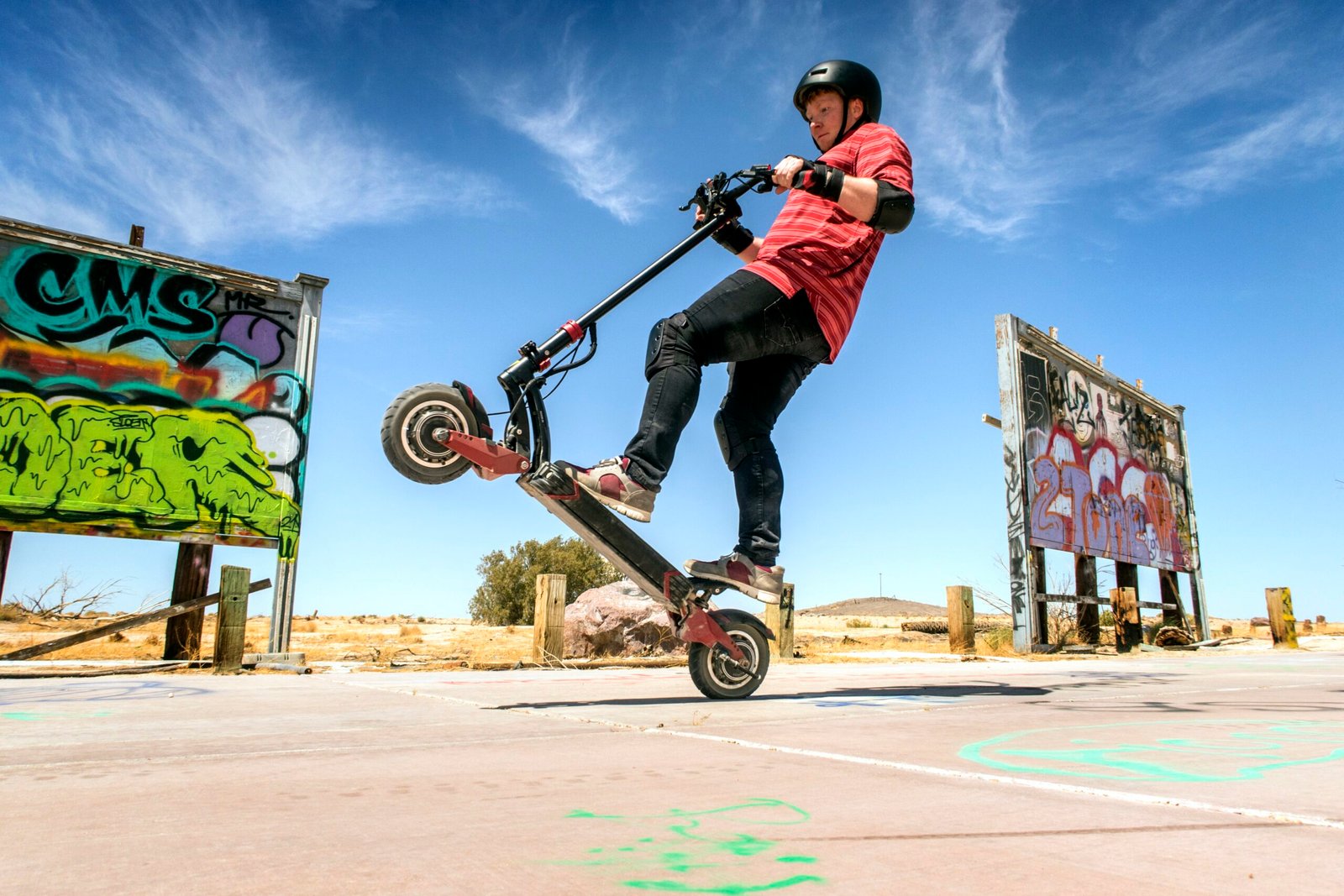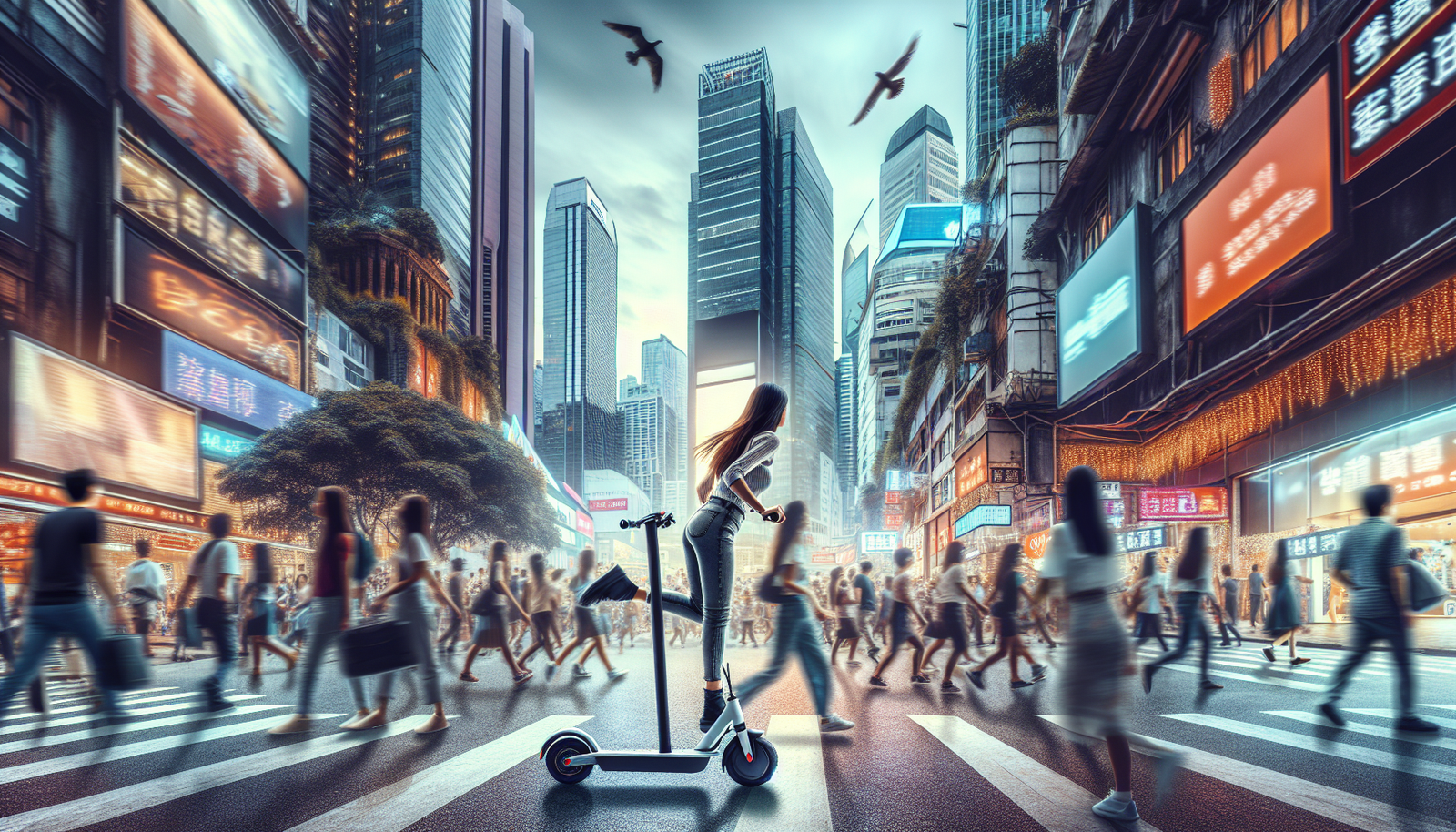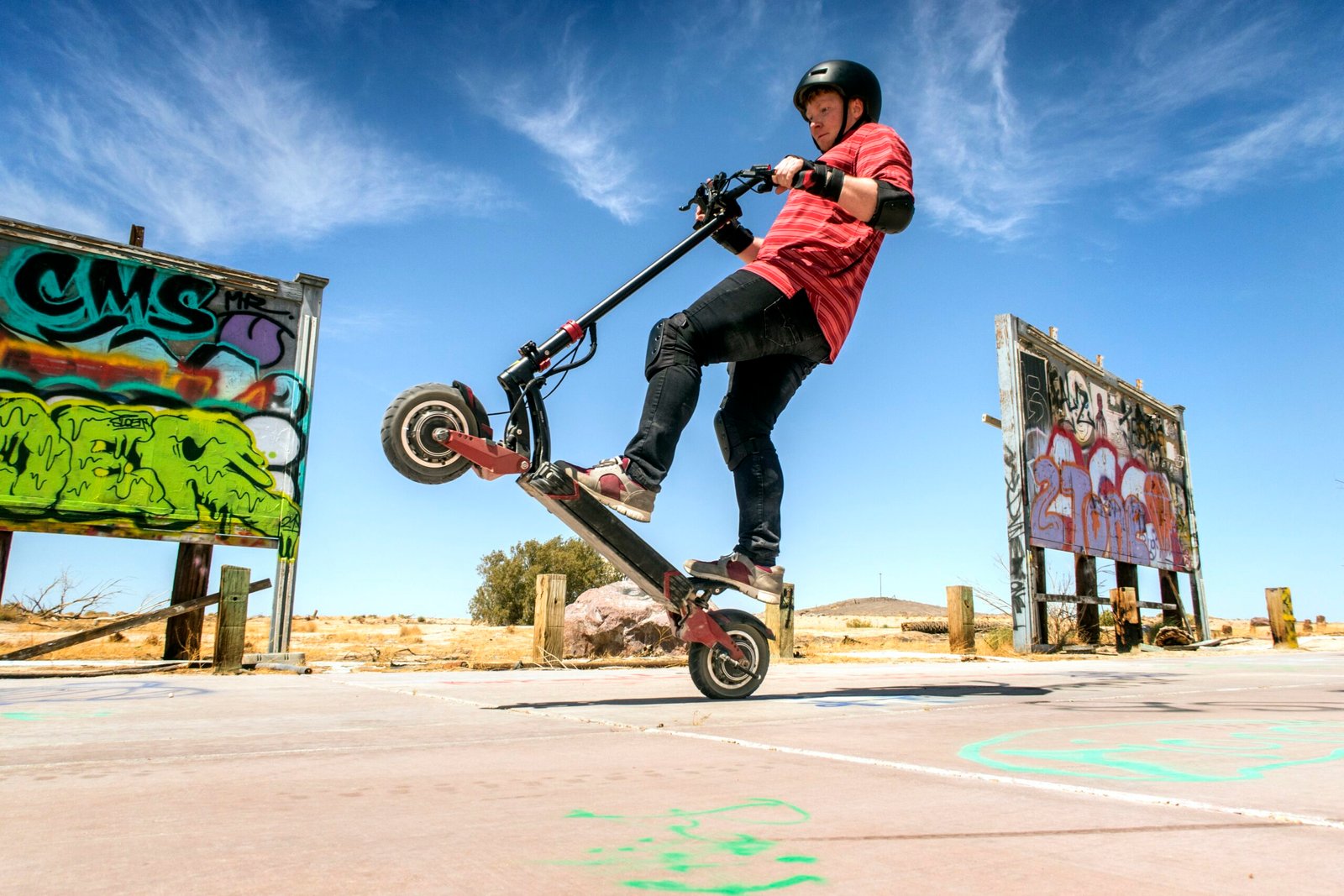Are you wondering if it’s possible to ride your electric scooter in crowded urban areas? Well, you’re in luck! This article will provide you with some valuable insights into the feasibility of navigating busy city streets on your trusty electric steed. We’ll explore the benefits as well as some important considerations to keep in mind, ensuring that you can confidently cruise through the hustle and bustle without a worry. So let’s dive in and see how you can make your electric scooter ride a breeze in even the most packed urban areas!

Safety Considerations
Speed and Maneuverability
When riding an electric scooter in crowded urban areas, it is important to consider the speed and maneuverability of the scooter. Electric scooters are known for their agility and ability to navigate through tight spaces, making them ideal for urban environments. However, it is crucial to ride at a safe and controlled speed to avoid collisions with pedestrians or other vehicles. Be mindful of your surroundings and adjust your speed accordingly.
Traffic Laws and Regulations
To ensure safety while riding an electric scooter in crowded urban areas, it is essential to familiarize yourself with the local traffic laws and regulations. Just like any other mode of transportation, electric scooters are subject to these laws and regulations, including speed limits, right-of-way rules, and designated scooter lanes. It is your responsibility to follow these laws and ride in a manner that promotes your safety and the safety of others.
Pedestrian Safety
In crowded urban areas, pedestrians are often the most vulnerable road users. When riding an electric scooter, it is crucial to prioritize pedestrian safety. Always yield to pedestrians and allow them the right of way when crossing the street or using sidewalks. Maintain a safe distance between your scooter and pedestrians, and be mindful of their movements. By respecting the rights and safety of pedestrians, you contribute to creating a harmonious and safe urban environment.
Urban Infrastructure
Sidewalks and Footpaths
Sidewalks and footpaths are important infrastructures for pedestrians, but it is important to note that electric scooters may not always be permitted on these pathways. Before riding on a sidewalk or footpath, check your local regulations to ensure that it is allowed. If permitted, ride at a slow and cautious speed, and be mindful of pedestrians. If riding on a sidewalk or footpath is not allowed, be sure to use designated scooter lanes or bike lanes.
Bike Lanes
In many urban areas, bike lanes are designated for cyclists and electric scooter riders. Bike lanes provide a safe and designated space for these modes of transportation, separate from vehicle traffic. When riding in a bike lane, be cautious of other riders and follow the flow of traffic. Stay in your designated lane and avoid sudden maneuvers or overtaking other riders. Bike lanes ensure a smoother and safer riding experience for electric scooter riders in crowded urban areas.
Roads and Streets
When there are no designated scooter or bike lanes available, electric scooter riders should ride on the road alongside other vehicles. It is important to ride in the same direction as traffic to ensure visibility and prevent accidents. Be mindful of the speed and flow of traffic, and maintain a safe distance from other vehicles. Follow all traffic laws and regulations, including signaling your intentions and obeying traffic lights and signs. By riding responsibly on the road, you contribute to a safer urban environment for all road users.
Public Transportation and Integration
Intermodal Connections
One of the advantages of riding an electric scooter in crowded urban areas is the ease of integration with public transportation. Electric scooters are lightweight and compact, making them easily portable. This allows riders to conveniently combine their scooter commute with other modes of transportation, such as buses, trains, or subways. By utilizing intermodal connections, riders can cover longer distances and further reduce their reliance on private vehicles, contributing to a more sustainable transportation network in urban areas.
Public Transit Regulations
While electric scooters provide an excellent last-mile solution for commuters, it is important to be aware of any regulations or restrictions imposed by public transit systems. Some public transportation providers may have specific rules regarding the use of electric scooters on their premises or vehicles. Familiarize yourself with these regulations to ensure a seamless and hassle-free integration with public transit. Respect the rules set by the transit provider, which may include folding and storing the scooter during the transit journey.
Dockless Scooter Programs
Many urban areas have implemented dockless scooter programs, allowing riders to easily rent electric scooters for their transportation needs. These programs often require riders to download a mobile app, locate available scooters, and unlock them for use via a QR code. Dockless scooter programs can provide a convenient and flexible option for urban commuters, but it is essential to use these scooters responsibly and park them in designated areas after use. Be aware of any additional regulations or guidelines set by the dockless scooter program provider to ensure a positive experience for both riders and the community.
Rider Responsibility
Awareness of Surroundings
Maintaining a high level of awareness of your surroundings is crucial when riding an electric scooter in crowded urban areas. Constantly scan the road ahead, checking for any potential hazards or obstacles. Be mindful of pedestrians, cyclists, and other vehicles, and anticipate their movements. Avoid distractions such as using your phone or wearing headphones, as these can hinder your ability to react to sudden changes in your environment. By being alert and aware, you can navigate urban areas safely and avoid accidents.
Respecting Pedestrians
Pedestrians play a vital role in urban environments, and it is essential for electric scooter riders to show respect and courtesy towards them. Always yield to pedestrians and provide them with the right of way. Slow down and exercise caution when passing pedestrians. Avoid riding on crowded sidewalks or footpaths, and be considerate of pedestrians’ personal space. By treating pedestrians with respect and consideration, you foster a positive relationship between scooter riders and pedestrians, making urban areas more harmonious and safe for everyone.
Sharing the Road with Vehicles
When riding an electric scooter on the road, it is important to share the space with other vehicles. Be visible to drivers by staying in well-lit areas and using lights or reflective clothing when riding at night. Signal your intentions clearly and follow the flow of traffic. Be cautious of blind spots and avoid riding in close proximity to large vehicles. By riding responsibly and adhering to traffic laws, you promote a safe and cooperative environment for all road users.

Benefits of Riding in Urban Areas
Avoiding Traffic Congestion
One of the significant benefits of riding an electric scooter in urban areas is the ability to bypass traffic congestion. As cities become increasingly congested with vehicles, electric scooters offer an efficient and nimble alternative for commuters. Electric scooters can weave through traffic and utilize bike lanes or scooter lanes, enabling riders to reach their destinations more quickly. By avoiding traffic congestion, riders save time and reduce frustration, making their urban commute more enjoyable.
Environmental Sustainability
Urban areas often grapple with high levels of air pollution and carbon emissions, primarily caused by vehicles. Riding an electric scooter contributes to environmental sustainability by reducing the reliance on combustion engine vehicles. Electric scooters produce zero direct emissions and have a lower carbon footprint compared to traditional gasoline-powered vehicles. By choosing electric scooters as a mode of transportation in urban areas, riders actively support the promotion of clean and sustainable cities.
Cost Efficiency
Compared to private vehicle ownership or even public transportation fares, riding an electric scooter in urban areas can provide significant cost savings. Electric scooters have lower operational and maintenance costs compared to cars or motorcycles. Charging an electric scooter is less expensive than refueling a vehicle with gasoline. Additionally, many cities offer affordable or even free scooter-sharing programs, making them an economical option for short-distance transportation. By opting for electric scooters, riders can save money without compromising their mobility needs.
Challenges and Drawbacks
Limited Range
One of the challenges of electric scooters in crowded urban areas is their limited range. Most electric scooters have a maximum range of around 15 to 30 miles, depending on factors such as battery capacity and terrain. This limited range may not be suitable for longer commutes or when traveling to distant destinations. It is important to plan your routes and ensure that you have access to charging stations if needed. As battery technology advances, this challenge is being addressed with the development of electric scooters with longer ranges.
Storage and Parking
Another challenge of riding electric scooters in crowded urban areas is the availability of convenient storage and parking spaces. Unlike bicycles or motorcycles, electric scooters do not have dedicated racks or infrastructure for parking. It is important to consider where you can safely park your scooter when reaching your destination. Some cities have designated scooter parking zones or scooter racks, while others may require riders to find suitable parking spaces on sidewalks or in designated scooter parking areas. Always ensure that you park your scooter in a manner that does not impede pedestrian access or create a safety hazard.
Vandalism and Theft Risks
Electric scooters, like any valuable personal property, are vulnerable to vandalism and theft risks in crowded urban areas. To reduce the chances of theft or vandalism, always lock your scooter securely when not in use. Utilize built-in or additional locks to deter potential thieves. Park your scooter in well-lit and visible areas to discourage malicious activity. Be mindful of any suspicious individuals or activities in the vicinity. By taking proactive measures to protect your scooter, you can minimize the risk of theft or vandalism.

Advancements and Innovations
Longer Battery Life
Advancements in electric scooter technology have led to improvements in battery life. Manufacturers are developing scooters with longer battery ranges, allowing riders to travel further without needing to recharge. Longer battery life increases the versatility and usability of electric scooters, especially in crowded urban areas where charging stations may not be readily available. As battery technology continues to evolve, riders can expect even more significant advancements in electric scooter battery life, making them an even more practical mode of transportation in urban environments.
Integrated Navigation Systems
Navigating through crowded urban areas can be challenging, but integrated navigation systems in electric scooters have made this task easier. Many electric scooters are now equipped with built-in GPS or smartphone connectivity, providing riders with real-time directions and navigation assistance. Integrated navigation systems enable riders to choose the most efficient routes, avoid traffic congestion, and reach their destinations more quickly and safely. These advancements in navigation technology enhance the overall riding experience and contribute to smoother and more efficient urban commutes.
Foldable Designs
Foldable electric scooters have become increasingly popular in crowded urban areas. These scooters feature a compact and collapsible design, allowing riders to easily fold and carry them when not in use. Foldable electric scooters are lightweight and portable, making them ideal for situations where storage or parking space is limited. They can be conveniently stored under a desk, in a trunk, or even taken on public transportation. The ability to fold and carry an electric scooter adds to its versatility and makes it an attractive option for urban commuters.
Safety Gear and Accessories
Helmets and Protective Gear
To ensure rider safety, it is recommended to wear helmets and appropriate protective gear when riding an electric scooter in crowded urban areas. Helmets can provide crucial head protection in the event of an accident or collision. Additionally, knee pads, elbow pads, and wrist guards can help prevent injuries in case of falls or accidents. Choose safety gear that meets the appropriate safety standards and fits properly for optimal protection. By wearing helmets and protective gear, riders prioritize their safety and set a positive example for others.
Reflective Clothing and Lights
Visibility is key when riding in crowded urban areas, especially during low-light conditions. Electric scooter riders should wear reflective clothing or accessories to enhance their visibility to other road users. Reflective vests, jackets, or stickers can significantly improve night-time visibility and help drivers and pedestrians spot scooter riders more easily. In addition to reflective clothing, electric scooters should be equipped with lights, both front and rear, to increase visibility from all directions. By enhancing visibility, riders reduce the risk of accidents and promote a safe riding environment.
Phone Holders and Communication Devices
While using mobile devices while riding an electric scooter is generally discouraged, phone holders and communication devices can provide convenient and safe ways to navigate or communicate during the ride. Phone holders securely attach smartphones to the scooter handlebars, allowing riders to utilize GPS or ride-sharing apps while keeping their hands on the handlebars and their eyes on the road. Bluetooth communication devices, such as hands-free headsets or helmet-mounted speakers, enable riders to receive calls or listen to navigation instructions without compromising their safety. It is important to use these devices responsibly, prioritizing safety and minimizing distractions.

Community Engagement and Policies
Collaborating with Local Governments
To promote safe and responsible electric scooter use in crowded urban areas, it is crucial to collaborate with local governments and transportation authorities. By engaging in open dialogues with city officials, scooter-sharing companies, and community organizations, valuable relationships can be forged to address concerns and develop effective regulations. Additionally, this collaboration can lead to the implementation of infrastructure improvements, such as designated scooter lanes and parking spaces, enhancing safety and convenience for scooter riders and the community as a whole.
Community Education and Outreach
Community education and outreach programs play a vital role in promoting safe and responsible electric scooter use. These programs can include safety workshops, educational campaigns, and public service announcements to raise awareness about scooter regulations, best practices, and potential risks. By educating riders, pedestrians, and drivers on how to share the road safely and respect one another’s rights, a culture of safety and mutual understanding can be fostered in crowded urban areas.
Collective Mobility Solutions
Electric scooters are just one component of a collective mobility solution for crowded urban areas. Collaborative efforts between scooter-sharing companies, public transportation providers, and other stakeholders can lead to integrated transportation networks that offer flexible and sustainable options for city dwellers. By integrating electric scooters with public transit systems, shared mobility platforms, and other modes of transportation, collective mobility solutions can provide a seamless and convenient urban transportation experience, reducing traffic congestion and promoting sustainable urban living.
Conclusion
Riding an electric scooter in crowded urban areas can offer numerous benefits, but it is essential to prioritize safety, respect, and responsibility. By adhering to traffic laws, being aware of your surroundings, and respecting other road users, you can navigate urban environments in a safe and efficient manner. Electric scooters, with advancements in technology and infrastructure, have the potential to revolutionize urban transportation by reducing traffic congestion, promoting environmental sustainability, and offering cost-effective mobility solutions. With community engagement, educational efforts, and responsible rider behavior, electric scooters can contribute to the creation of vibrant and livable urban spaces. So, go ahead and embrace the convenience and excitement of riding your electric scooter in crowded urban areas, while always keeping safety at the forefront.


